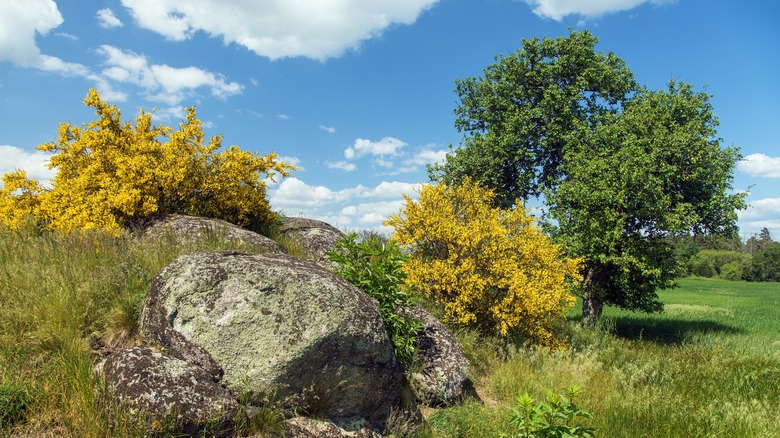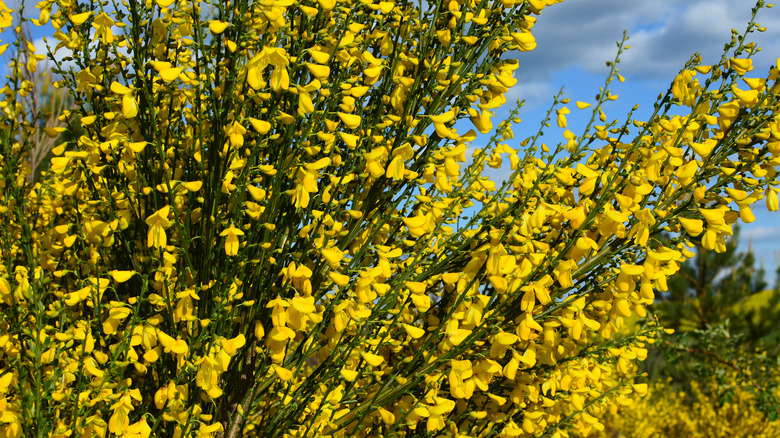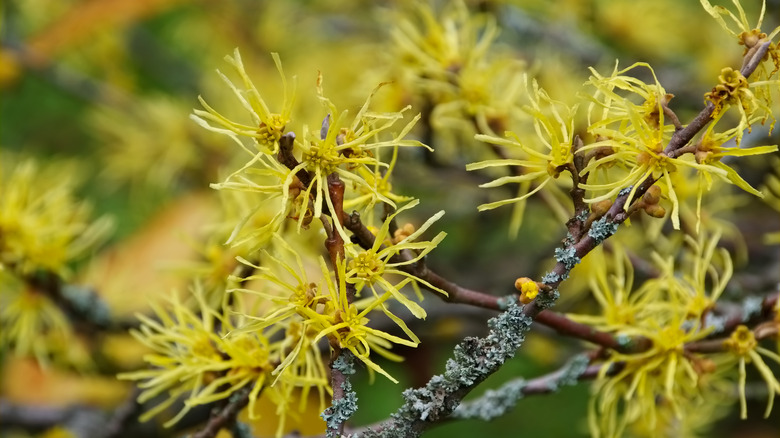This Bright-Blooming Plant Is Stunning, But It Is Actually An Aggressive Weed
Shrubs covered in bright yellowish-gold flowers can be a delight, especially if they flower in early spring. Unfortunately, not all that glitters is gold, and not every golden-flowered shrub should be in your garden. In the case of the scotch broom (Cytisus scoparius) plant, its invasive spread and toxic nature have put it on the noxious weed list in many states. Identifying, removing, and replacing this aggressive and dangerous shrub will pay dividends and make your garden safer for your family, as well as for native plants.
Considering how beautiful the flowers of the scotch broom are, it's no surprise to learn that when it first arrived in the United States in the 1800s, it was used as an ornamental plant. Unfortunately, since the Scotch broom can produce thousands of seeds a year, recover from being cut back or even burned, and crowd out native plants, it quickly spread and is now a major issue along both the East and West Coasts of the U.S. Even worse, scotch broom is extremely toxic to humans, livestock, and many other animals, including horses, cats, and dogs.
Identifying and removing scotch broom
The bright, five-petaled flowers that bloom profusely in spring may be the easiest way to recognize scotch broom. While they are often yellow, some flowers may be red or pink. They are similar in shape to the flowers of pea and bean plants, which makes sense considering scotch broom is a member of the same family (Fabaceae). After the flowers fade, dark brown pea-like pods full of seeds form.
Scotch broom can also be identified based on its stems and leaves. It has surprisingly few leaves, and what leaves it has are different on the upper and lower branches. Leaves on the base branches have three leaflets, while the upper leaves are singular. The branches themselves are hairy when they are younger and are woody and hairless when they are older.
If you've concluded that you're dealing with a scotch broom invasion in your yard or garden, the best thing you can do is get to work safely removing the invasive plant species from your lawn and garden before it can spread further. Young scotch broom plants can be dug up or pulled by hand. For larger patches, repeated mowing can also work. In some cases, it may be necessary to use herbicides as well. Scotch broom seeds can live for up to 60 years before germinating, so persistence is essential. Common weeding mistakes, like not staying on top of removing seedlings, can easily let scotch broom make a comeback in your yard.
Native alternatives to scotch broom
Removing invasive scotch broom can help make space in your garden for native plants. Some, like American witch hazel (Hamamelis virginiana), even have yellow flowers. These distinctive flowers are often compared to spiders and bloom in autumn. While most American witch hazels can get surprisingly large for shrubs, reaching heights of over 15 feet, smaller cultivars, like Little Suzie, which grows to only 5 feet, are also available. Gardeners in USDA zones 3 through 9 should have good luck growing American witch hazel as long as they provide it with full or partial sun and moist, acidic soil. Best of all, deer won't touch this gorgeous plant, or most other kinds of witch hazel.
Another fantastic option for gardeners looking for a yellow flowering shrub is Kalm's Saint John's wort (Hypericum kalmianum). This petite shrub is native to the Northeastern United States and rarely grows over 4 feet tall. A hardy perennial in zones 4 through 7, Kalm's Saint John's wort thrives in moist soil and produces gorgeous yellow flowers during the late summer months.
Another great way to bring vibrant yellow colors into your garden is through foliage, and while the beloved North American native ninebark (Physocarpus opulifolius) has white clusters of flowers instead of yellow, many of its cultivars, including Golden and Nugget, have bright yellow spring leaves that could easily be mistaken for flowers. Ninebark thrives in zones 2 through 8 and benefits from moist, well-draining soil and full or partial sun.


